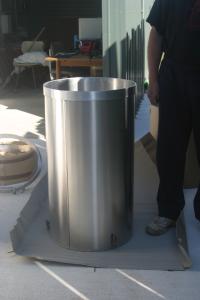 |
This is the top section, 600mm high. Note the reinforcing band around the top and the latches
around the bottom. There is an internal reinforcing ring at the bottom which you can't see in this photo.
|
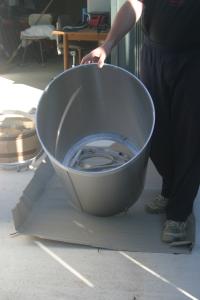 |
Tipped over, you can see the reinforcing ring at the bottom of this section.
The inside of the tube sections will be painted matt black in due course.
|
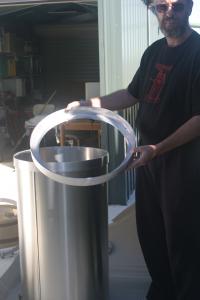 |
Here is the internal mounting ring and collar, shown next to the bottom of the scope (900mm high).
This collar goes into the bottom of the tube as you see
here and bolts firmly to the sides.
The ring has three threaded holes to take 3/8" long bolts that will screw through from the internal side
and extend about 2" out the bottom. These bolts will act as the mounting points for the mirror cell.
|
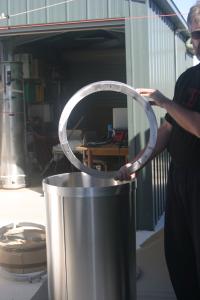 |
Tipping this mounting ring up so you can see the reinforcing around the threaded holes.
Extra pieces of aluminium bar are welded on here to give the required strength and depth for the
threaded holes.
|
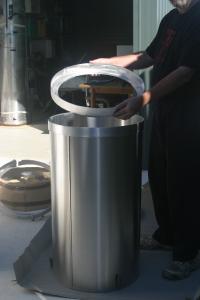 |
About to push the mounting ring into the bottom of the tube. It's a snug fit.
|
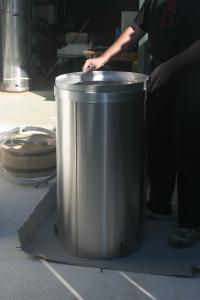 |
The mounting ring pushes down until it's level with the bottom of the tube. When assembled it
will be bolted in place so that it doesn't move.
|
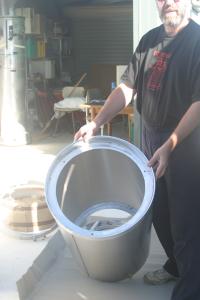 |
One last look at the mounting ring and collar, now approximately in its final position. You can see the three threaded
holes where the long bolts will come up. These long bolts will be the mounting points for the mirror cell.
|
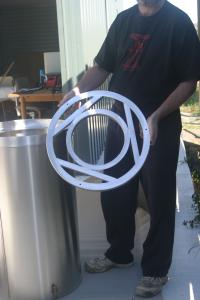 |
Here is the mirror cell, it is a thing of beauty.
It's made entirely from aluminium but is very strong. It's approx 28mm thick with a reinforced ring close to the middle,
three square aluminium reinforcements and a 25mm wide ring on the outside.
The mirror cell is slightly smaller than the inside collar of the mounting ring so it will fit entirely
inside with a few mm clearance.
The mirror supports (whiffle tree or similar) will bolt onto the flat side (shown here) of this ring.
Note the three holes in the outer ring that will go over the long bolts coming down from the mounting ring.
|
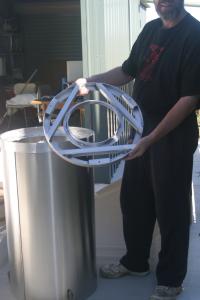 |
And here is the backside of the mirror cell. This is the side that faces away from the mirror and
toward the bottom of the scope. There are lots of open areas where I can blow cold air in to cool
the mirror.
You can clearly see the structure of the mirror cell in this image, the three square aluminium
sections and the ring and collar. Also note the short aluminium pieces that reinforce around the three
collimation holes in the rim.
|
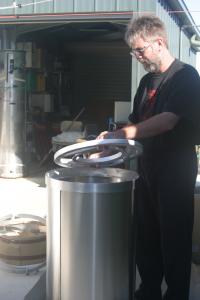 |
This shows how the mirror cell fits inside the collar of the mounting ring. You'll have to imagine the three
high tensile bolts that are screwed through the mounting ring, the mirror cell goes over those bolts
with compression springs in between.
|
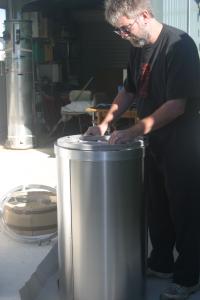 |
There is about 5mm clearance all the way around the outside, so that the mirror cell fits
entirely inside the collar of the mounting ring.
|
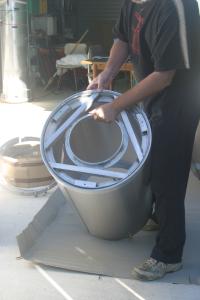 |
A better view of the mirror cell inside the mounting ring. In the final assembly there will be
three long high-tensile bolts coming up from the mounting ring, with a compression spring over each,
and the mirror cell sits over the springs.
This is an "upside down" arrangement where the mirror cell is at the bottom of the tube, the springs are
above the cell, and the mounting ring is above the springs. This way makes a lot of sense as the mirror
cell is not resting on the springs and so will not move out of collimation as the scope is tilted around.
No locking screws of similar are needed, the mirror cell is being pushed down onto the collimation knobs
by the springs between it and the mounting ring.
|
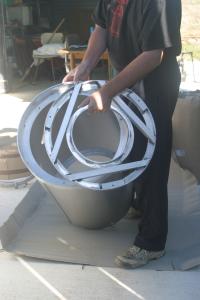 |
One more look with the mirror cell held slightly off to the side so you can see the 3/8" threaded
hole in the mounting ring (inside the tube) and the matching holes in the outer rim of the mirror cell.
|
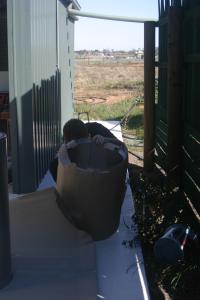 |
Hmm, unwrapping more tube sections... cardboard is a wonderful thing.
|
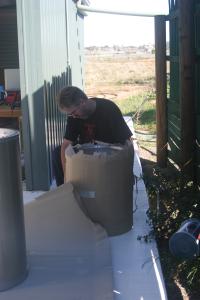 |
...maybe I need the instructions?? :-)
|
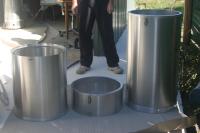 |
Aha, now all three pieces are unwrapped. From left to right they are 600mm high (top section),
200mm high (mid section) and 900mm high (bottom section).
|
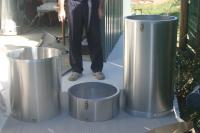 |
oops, the previous pic had the top section upside down, bet you didn't notice :-) Anyway, here's
another pic with it the right way up.
See that the top section also has a reinforcing band on the outside. There are internal
reinforcing rings as well, down close to the joins.
|
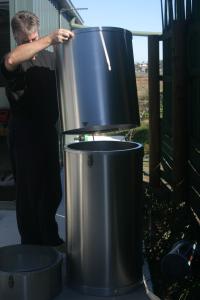 |
For use with my 16" f/4 mirror (1.6m focal length) I use the top and bottom sections as you see
in these next few images. Total tube length will be 1.5m, the rest of the focal length comes due
to the 510mm tube radius and focusser height.
|
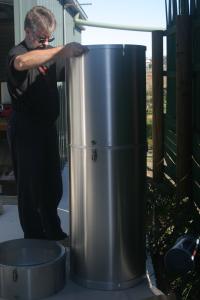 |
Pushing the two pieces together.
|
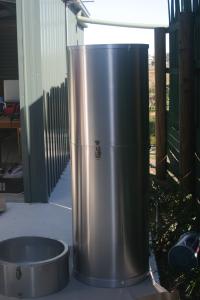 |
Finished. This will be the config used for my 16" f/4 composite mirror when it arrives.
|
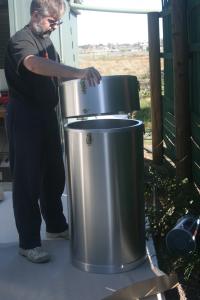 |
The other arrangement is with the 200mm mid-section fitted to give a tube 1.7m long and able to take
either of my other mirrors (13.1" f/5.5 or 14.5" f/5). They both have focal lengths of 1.8m.
|
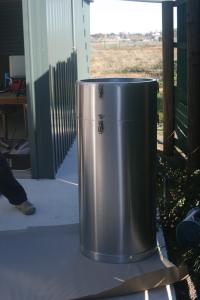 |
Mid section is on, now adding the top section...
|
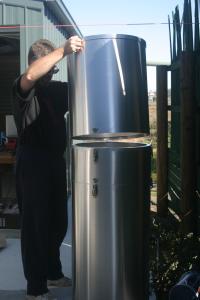 |
Add the top section.
|
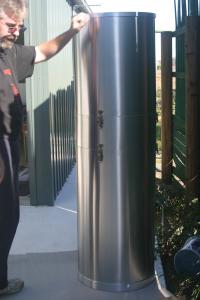 |
All done. This assembly gives a tube that is 1.7m tall.
|
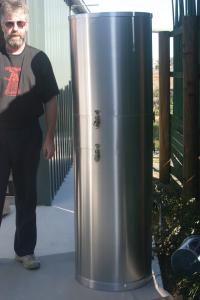 | |
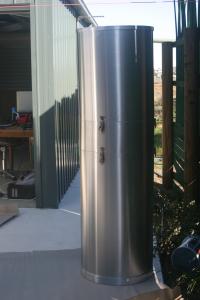 | |
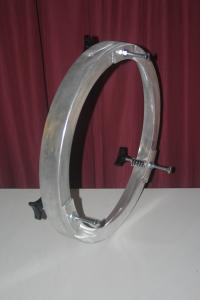 | |
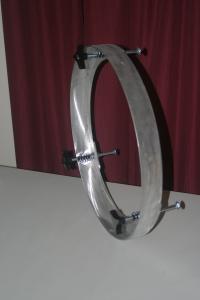 | |
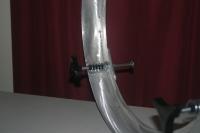 | |
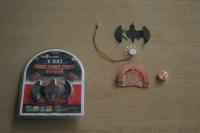 | |
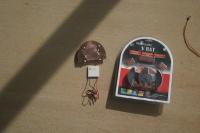 | |
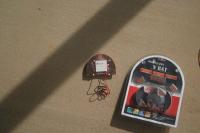 | |
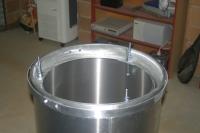 | |
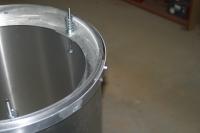 | |
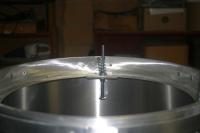 | |
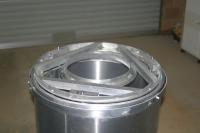 | |
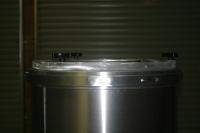 | |
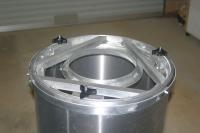 | |
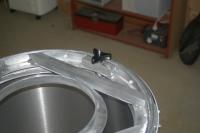 | |
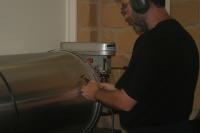 | |
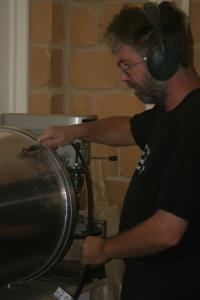 | |
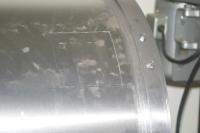 | |
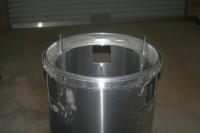 | |
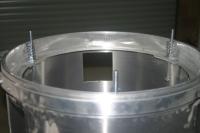 | |
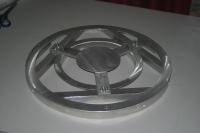 | |
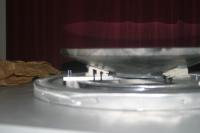 | |
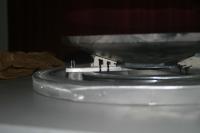 | |
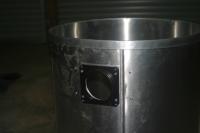 | |
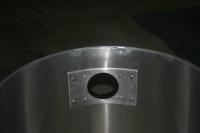 | |
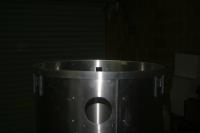 | |
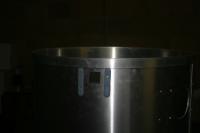 | |
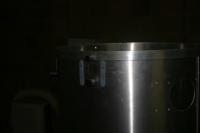 | |
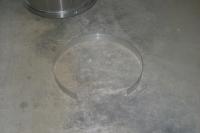 | |
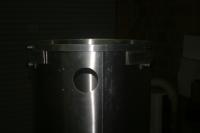 | |
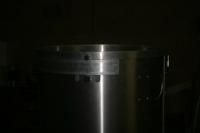 | |
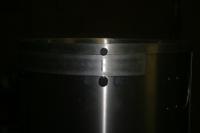 | |
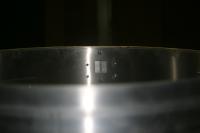 | |
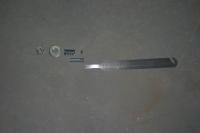 | |
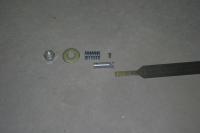 | |
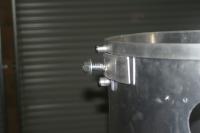 | |
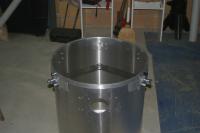 | |
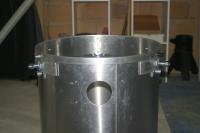 | |
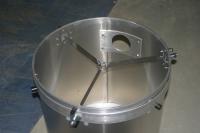 | |
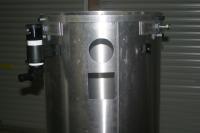 | |
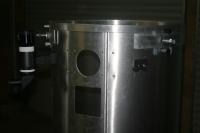 | |
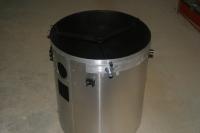 | |
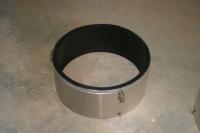 | |
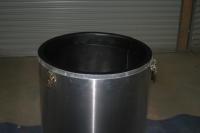 | |
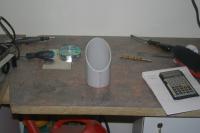 | |
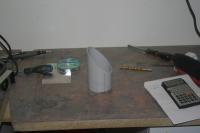 | |
 | |
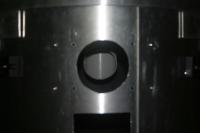 | |
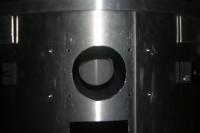 | |
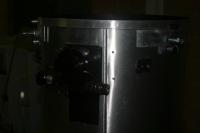 | |
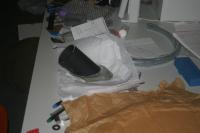 | |
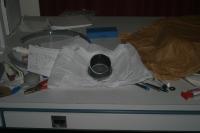 | |
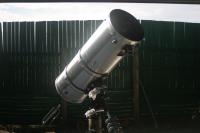 | |
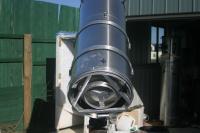 | |
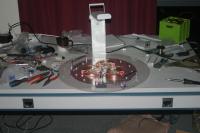 | |
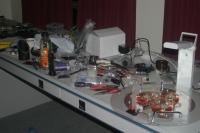 | |
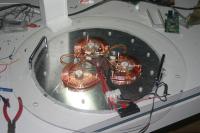 | |
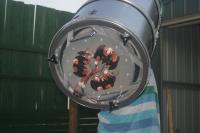 | |
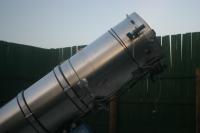 | |
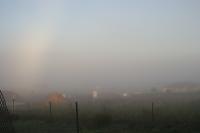 | |
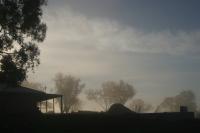 | |
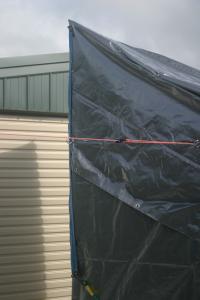 | |
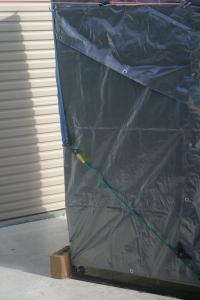 | |
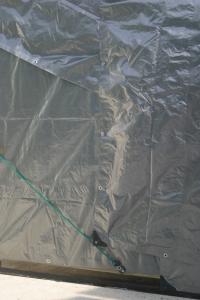 | |
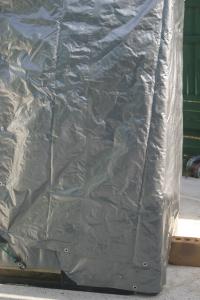 | |
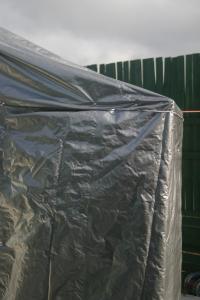 | |
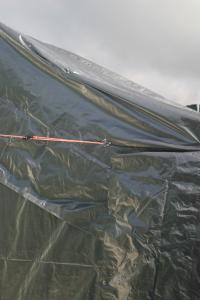 | |
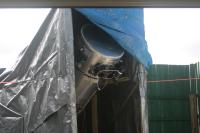 | |
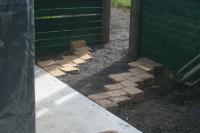 | |
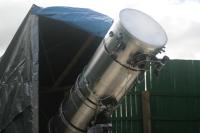 | |
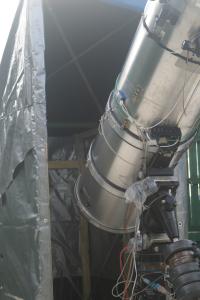 | |
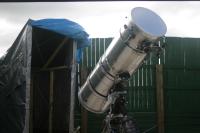 | |
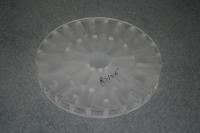 |
16" Mirror blank, front surface. This surface is 12mm thick and made from fine annealed Borosilicate glass. It has the Radius of Curvature marked (126") from the factory (Newport Glassworks), ie
it's currently a spherical surface. This will be reduced to a parabola with FL 64" when it's done.
The mirror blank will be handed onto Mark Suchting of Deep Sky Optics for finishing.
|
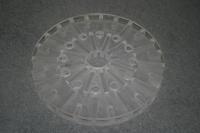 |
16" Mirror blank, rear surface. The rear surface is made from 12mm thick fine annealed Borosilicate glass. Note the ventilation holes between front and back surfaces, arranged
as 12 small holes at approx 50% radius and a large hole in the centre. |
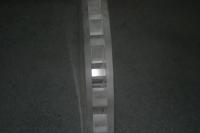 |
Mirror blank, side view of the composite design. The front and rear surfaces are separated
by a set of radial glass ribs to allow much better cooling than is normal for a mirror this size.
The ribs are 12mm thich and 25mm high and also made from fine annealed Borosilicate glass.
The whole assembly has been fused and fine annealed in the kiln at Newport. |
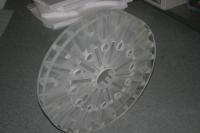 |
Another angled side view of the 16" composite mirror blank, showing the rear surface with ventilation
holes and also the arrangement of internal glass ribs.
The mirror blank weights 8kg.
|